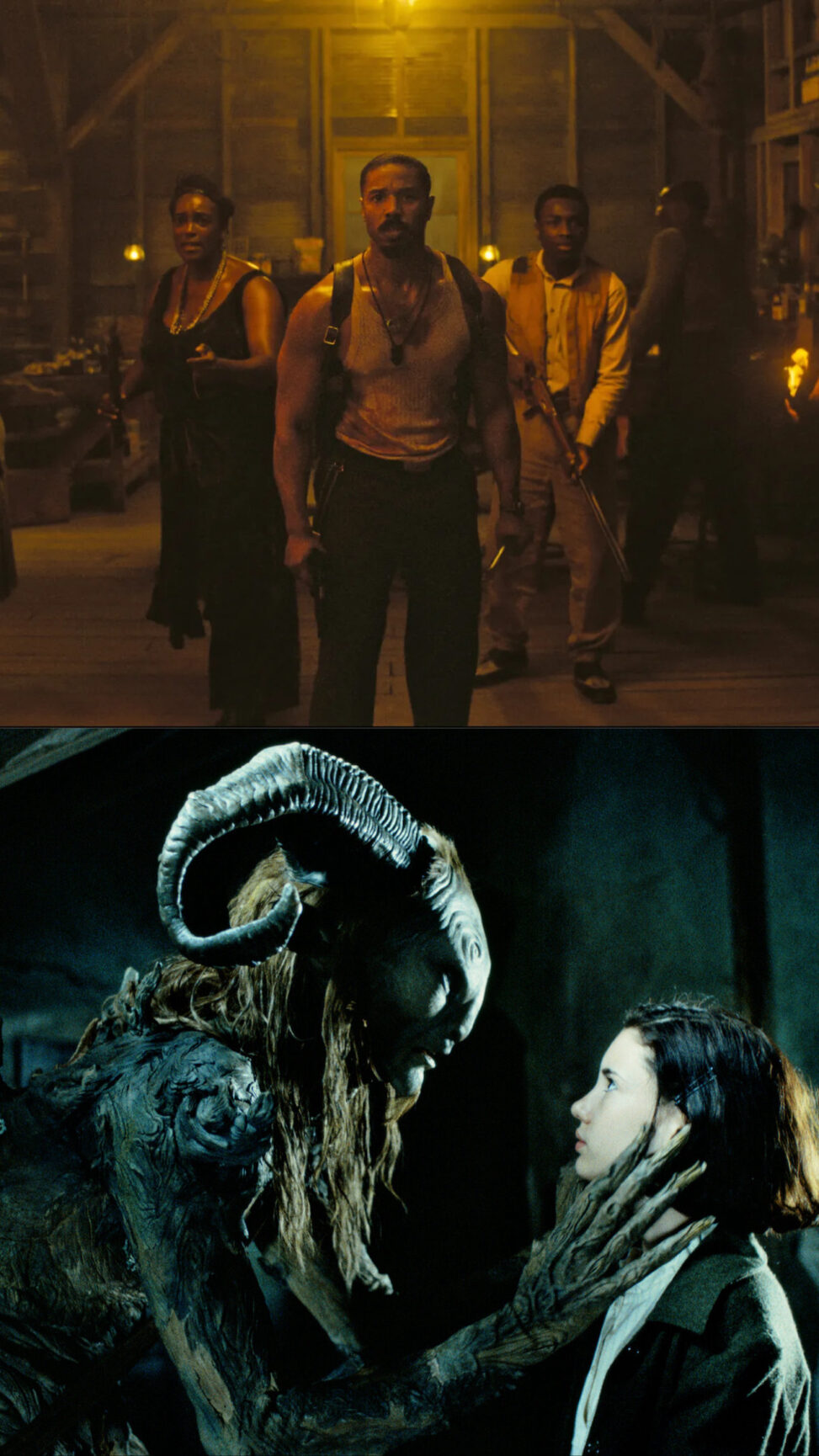Horror films have always served as cultural mirrors, revealing the anxiety, fears and intentions that shape a society at a particular moment in time. Sinners (2025) and Pan’s labyrinth (2006) are two films that use monstrous figures, dark atmospheres, and symbolic storytelling to express these very deep, cultural concerns. Even though they are systematically different Sinners leans into more of a psychological and sexualized horror, whereas Pan’s labyrinth tries to blend fantasy with the brutal realities of war, and both these films demonstrate Modus Legendi by showing the idea that we can try to understand a culture by the monsters it creates through there, narratives, visual styles, and pivotal moments of transformation. Both of these films uses its own type of “monster” to view what that society, fears desires or refuses to confront. Before we even watch sinners, we tend to carry general knowledge about horror films. They often exaggerate danger, involved in the breaking of social rules and uses creatures of supernatural elements to symbolize something is hidden. Horror is usually a space where taboo subjects, especially sexuality, violence, or even moral corruption can be explored safely through metaphors. Sinners leans directly into these expectations by using sexualized imagery, seductive threats, and moral corrupt characters to critique environments were the desire and punishment both coexist to each other. In contrast Pan’s labyrinth grounds it’s horror, not in sexuality, but in political brutality. The monsters of Guillermo del Toro’s world like the Pale man and the Faun are animated extensions of trauma, fascism, and the oppression authority haunting the child protagonist, Ofelia. The film shared several similarities, both of which each monsters are not just literal creatures, but are symbols, for example, in sinners the “monster” often takes the form of seduction, manipulation, and moral decay, while in Pan’s labyrinth, the monster is a physical embodiment of violence, power, and innocence lost. Both films also rely heavily on atmosphere and trying to use dark lighting, symbolic spaces and controlled pacing to build tension. Each story follows a type of character whose perception of the world becomes increasingly distorted, which forces them to make a moral defined choice or choices. However, the film differs in tone and their approach to horror. Sinners uses sexual tension, temptation and human cruelty as it’s primary form of fear. It’s style is contemporary and gritty, which focuses on interpersonal danger rather than the mystical creatures whereas in Pan’s labyrinth, by contrast, it blends dark fantasy with historical reality it tries to use fairytale rules tasks ,and magical helpers, and even enchanted objects to frame horrors that ultimately come from human beings, specifically the fascist forces which were controlled in Spain in 1944. While sinners suggests that danger arises from human desires and moral collapses Pan’s labyrinth argues that the real monsters are authoritarian systems and those who enforce them.
Both films demonstrate Modus Legendi clearly. Sinners reveals a culture anxious about sexuality, sin and punishment and also the monster is not supernatural. It is the fear of desire itself, and the consequences society attaches to “ forbidden” behavior. Sexualized horror often emerges in cultures that struggle with morality repression and shame. Pan’s labyrinth reveals a culture shaped by political trauma. Its monsters reflects violence and a lot of loss of innocence and the struggle to maintain humanity under oppressive regimes. Through its creatures, the films expose of Spain’s historical wounds, and the lasting impact of war on children and families. The visual techniques in each movie depends on their themes. Sinners relies on dim lighting, tight close-ups, and slow pacing to create an intimate sense of danger. The characters are often tried to be framed by shadows or red toned lights, suggesting guilt, temptation, and moral ambiguity. The sounds are abrupt and sharp, emphasizing psychological tension.Whereas Pan’s labyrinth uses richer, visual symbolism with cold blue tones for the real world, that gives warm, gold and green for the fantasy world which suggesting comfort, magic and escape. I feel like the camera tries to linger on texture of creatures, labyrinth walls, and bloodshed, blending wonder with terror. Del Toro’s tries to use silence as effectively as music, especially during scenes which involve the pale man, where slow pacing builds unbearable, anxiety. Each film contains a pivotal moment where everything changes in sinners the significant turning point occurs when the protagonist tries to confront the true nature of the danger, they are involved in the moment when desire becomes threat introduction becomes violent. This soon exposes the film central message that the sin is not just an action, but it’s also a trap that tries to consume those who enter it then in pan’s labyrinth the pivotal moment is Ofelia’s final test when she refuses to harm any innocent person, even though it means losing a chance to escape. This moment defines morality. It reveals the films message that true innocence survives in the face of power and imagination can be a form of resistance. Ultimately, both Sinners and Pan’s labyrinth use horror to try explore what society’s fear most the other tries to explore sexual corruption in one case and other one political brutality. And also shows through monsters, both real and symbolic and through visual story times that shape mood and expectations. They all demonstrate how horrible allows culture to confront anxieties. It cannot openly discuss.

Provide Feedback